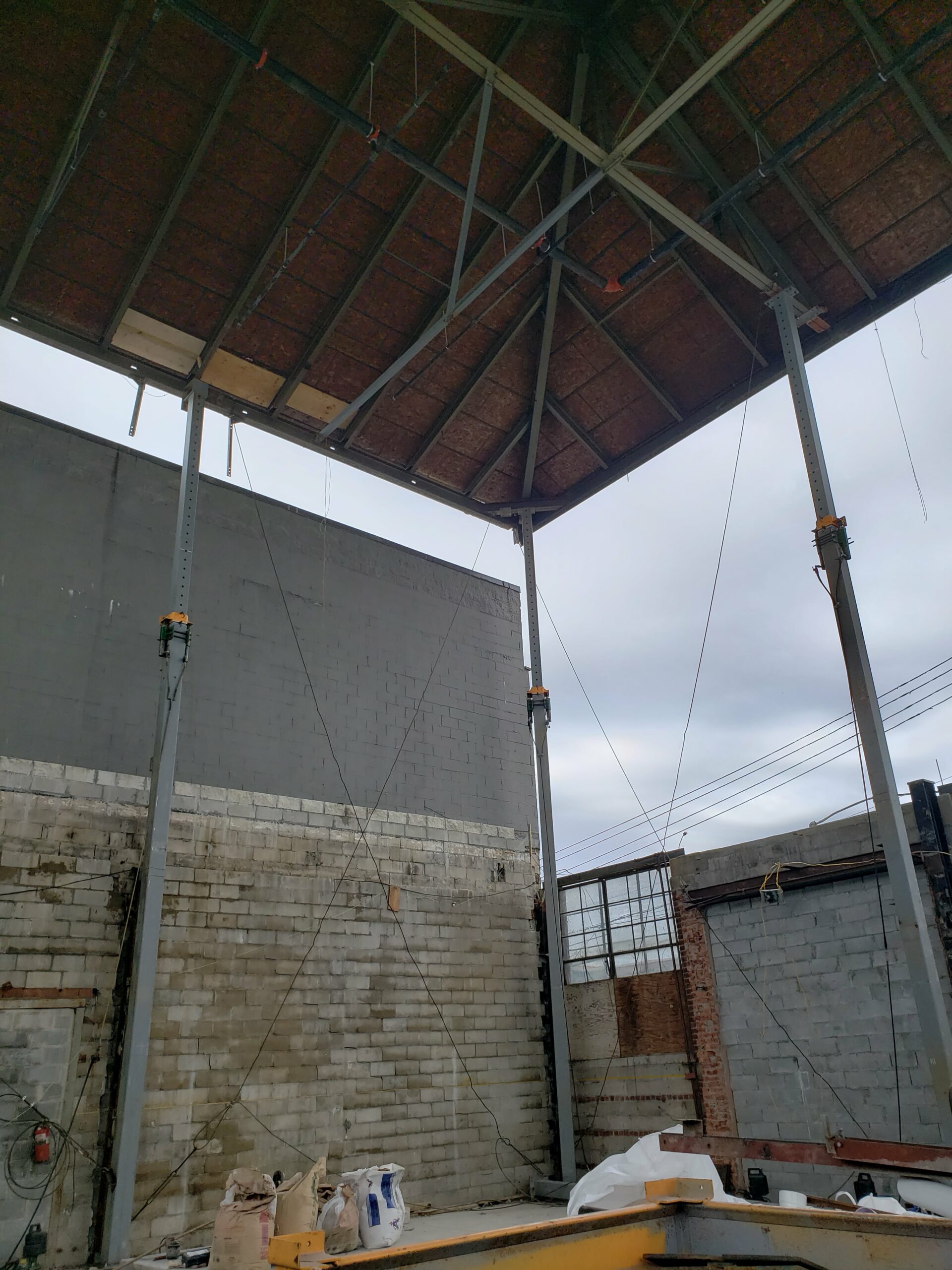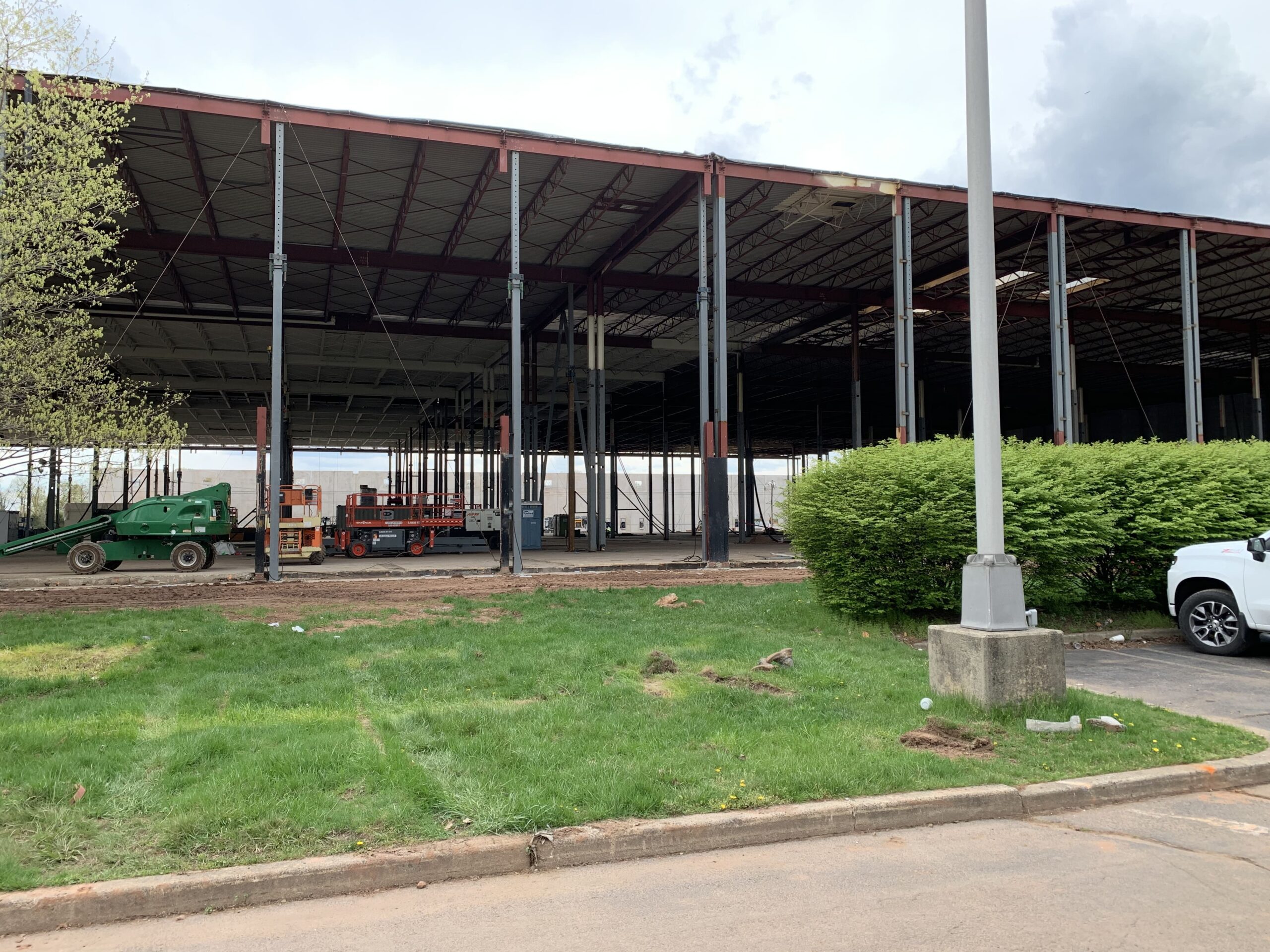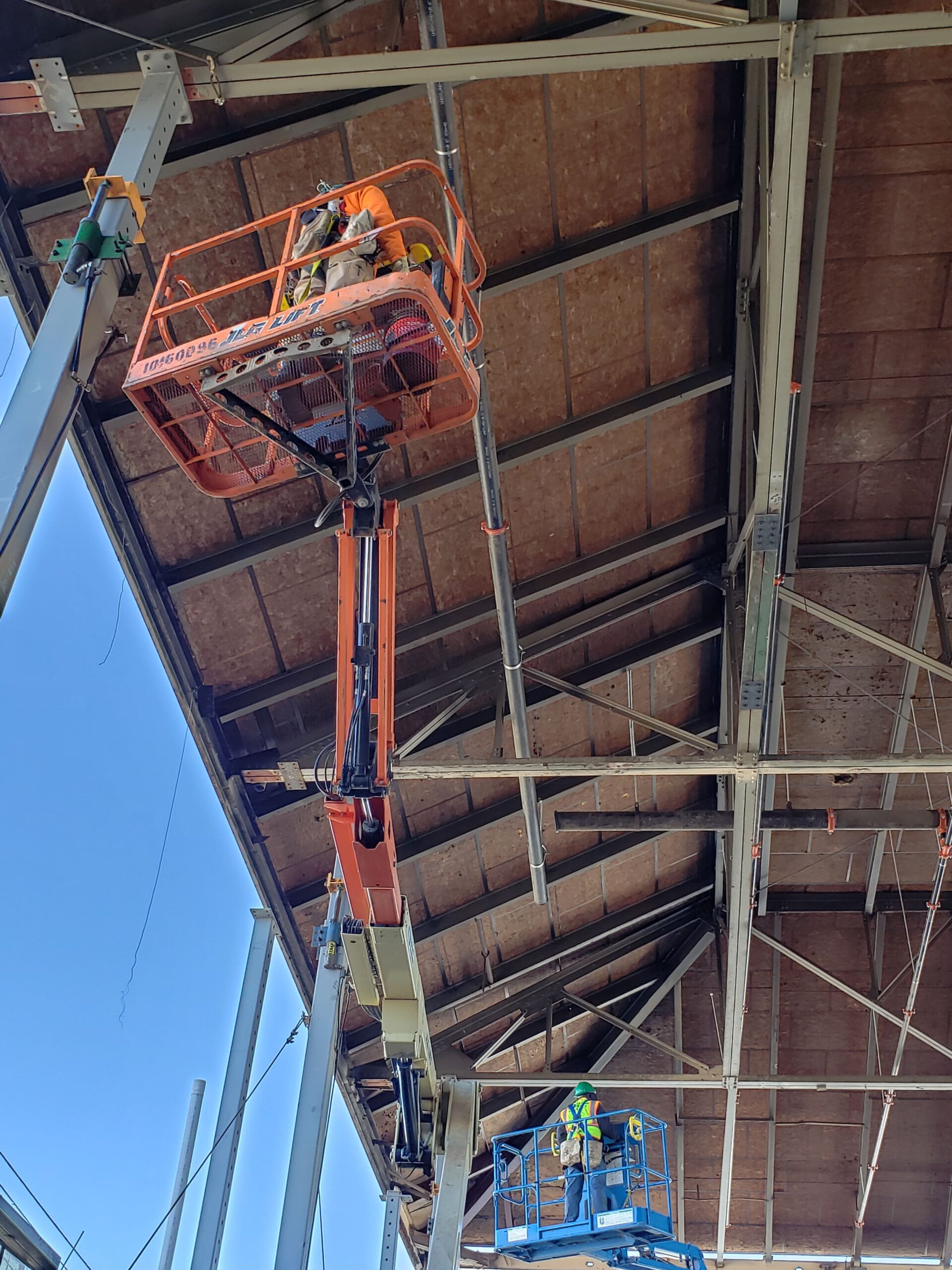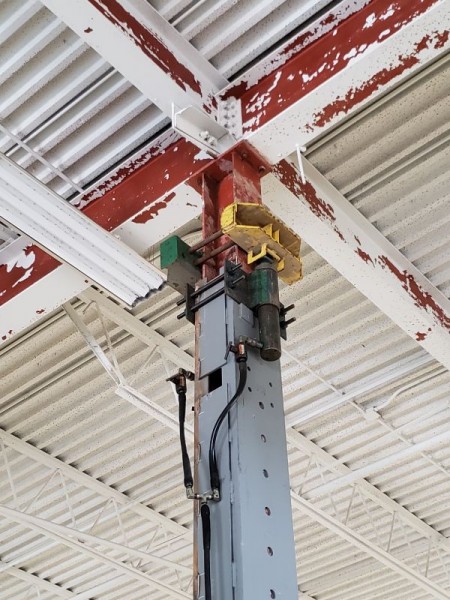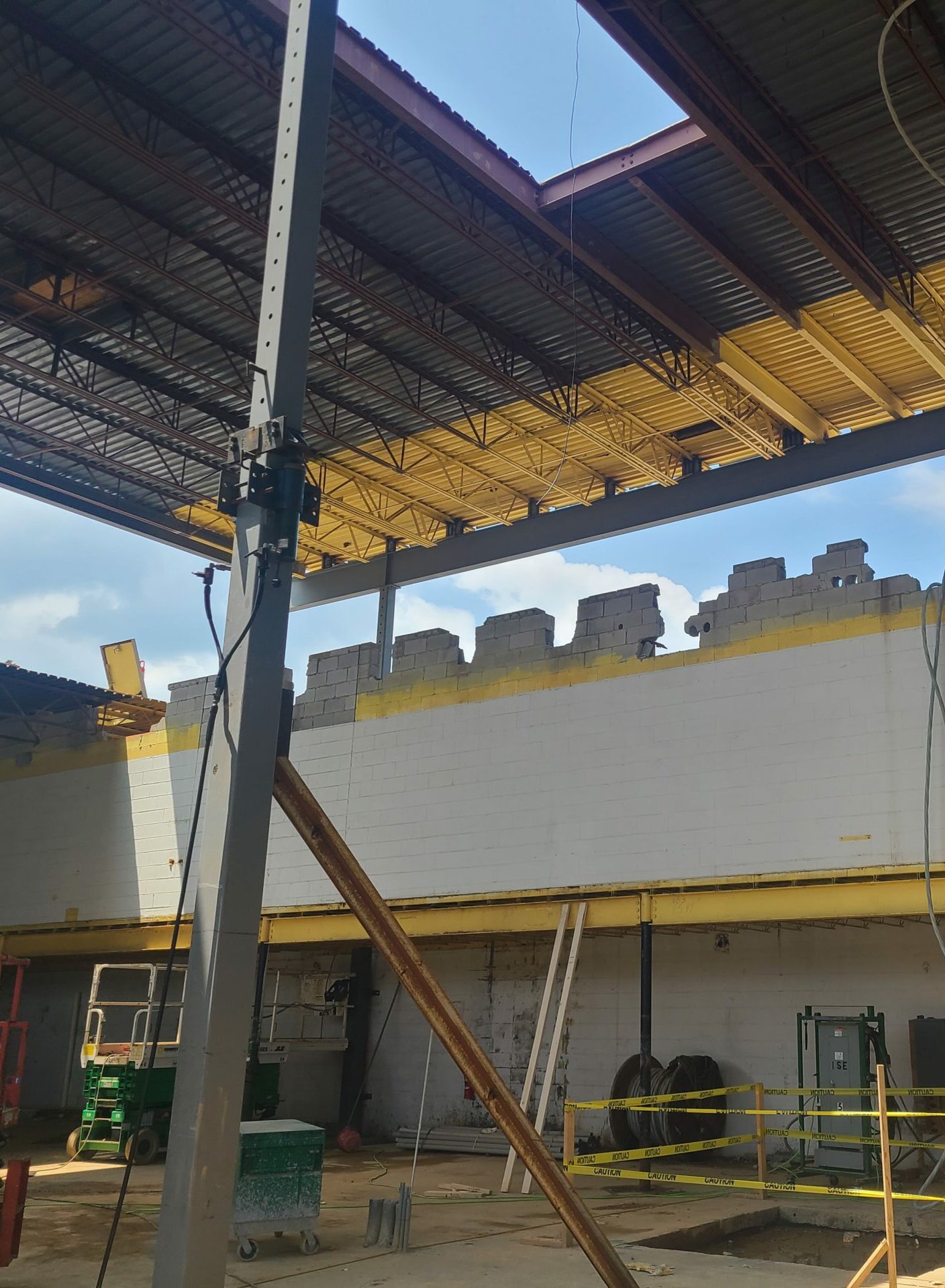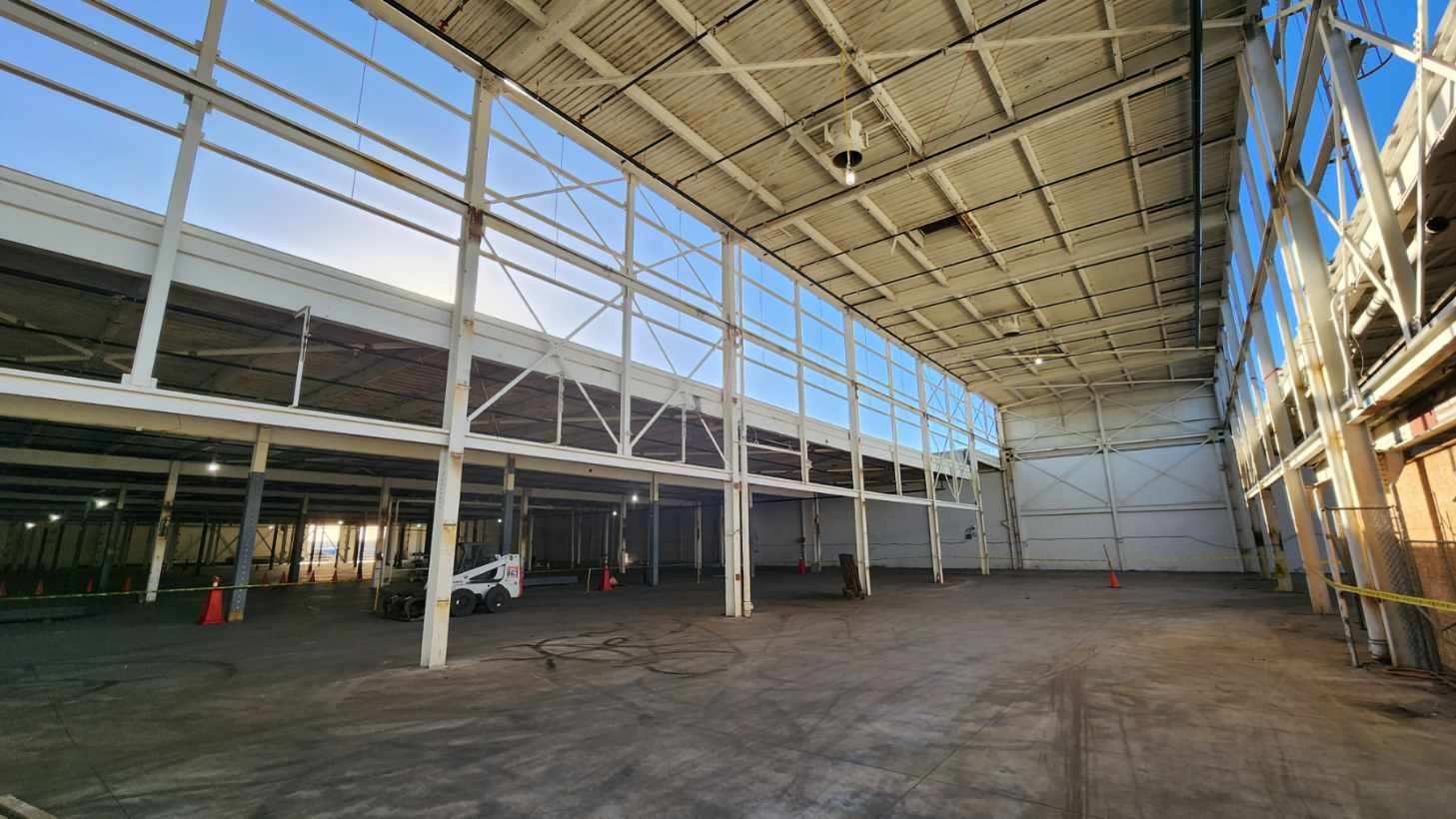Understanding the Basics of Roof Lifting.
Not only did we invent the process for how to safely lift a roof and increase a building’s cubic space, we have perfected the process here at LIFTEX.
Roof lifting is a process in which an existing building has its roof, while still intact, architecturally lifted with structural steel telescoping columns in order to increase the ‘clear height’ of the inside of the building. This can be achieved in a single lift or multiple lifts depending on the property’s size.
Property managers and owners decide to lift their roof because it creates more cubic feet of usable space inside a building, greatly increasing the marketability and demand for the property.
In situations with occupied buildings, it reduces the need to relocate operations to new facilities during periods of expansion.
Roof lifting as a growth solution for commercial properties has been around for over 50 years and continues to gain more popularity for savvy property owners, managers, and businesses.
A Brief History Lesson.
In the 1960s to ’80s, commercial and industrial buildings had heights of 14” to 24”, designed for manufacturing. As manufacturing jobs shifted overseas, businesses faced a need for warehousing space, but existing buildings were ill-suited.
That’s where LIFTEX comes in. We pioneered roof lifting to make these properties more marketable, saving costs and minimizing disruptions. Roof lifting offers a cost-effective, non-disruptive solution for expanding upwards and maximizing existing building potential in today’s evolving business landscape.
Why Lift Your Roof?.
As businesses grow and scale they must plan for their future.
They must consider their warehousing, manufacturing, and office facilities, as well as their employees, customers, and proximity to distribution hubs and cities.
Roof lifting enables properties to maximize their operating potential within an existing locale, making their real estate more functional and marketable.
By building upwards in their current space, they often maintain an advantageous position geographically while eliminating costs and losses associated with searching for, purchasing, and developing a new property.
Meanwhile, property owners and managers who lease their space will lift their roofs to make their buildings more attractive to the growing number of businesses that need increased cubic space and clear height.
In many cases, roof lifting is more advantageous than buying and developing new land.
Who Needs a Roof Lift?.
Some of the most common businesses that lift their roofs are:
- Warehousing
- Distribution Centers
- Manufacturing Facilities
- Big Box Retail
- Experience Retail (Rock Climbing Gyms, Trampoline Parks)
There are numerous industries that are excellent candidates for roof lifting. These often top the list because they require large amounts of open space/clear height within a structure to either store inventory and materials or accommodate equipment.
Read More
Ultimately, the decision to lift a roof can be initiated by many different stakeholders, from building owners and property managers to the leaseholder. In the majority of cases, LIFTEX works closely with property managers and owners who choose to lift a roof as a means to attract the right client.
Often, building owners who lease out their real estate are pursuing a client from a specific industry. After performing market research they find that their ideal tenant requires more clear height to satisfy operations.
Rather than wait on the increasingly rare perfect tenant to fit the existing space, these property owners will lift their roof and focus their efforts on signing firms from the target industries to which their research pointed.
In other cases, tenants can influence the property owner to lift the roof. LIFTEX has lifted roofs for an expansive list of nationwide brands. These brands have a strong influence over the property they lease due to their reliability as a tenant.
When these larger brands enjoy the economic benefits of a geographic location, that can influence the property owners to lift the roof as a way to ensure long-term lease retention. Landlords are often thrilled to invest in roof lifting as a means to retain stellar clients!
When is Roof Lifting a Good Choice?.
Below are some of the more common reasons that LIFTEX has been brought in to lift the roof of an existing structure:
Property owners and managers want to make their space more attractive to potential tenants
E-commerce businesses that need to meet increasing inventory storage demands but cannot justify purchasing or developing a new property
Businesses that have outgrown their existing space
Increasing operational area within an existing space
Consolidating multiple locations into one space
Defining Terms.
As in any profession, roof lifting has some terms that are well understood by those with enough experience in the field but sound strange or even silly to those not ‘in-the-know.’ We hope to dispel some confusion and clarify the meaning behind some of our favorite jargon when discussing roof lifting.
Clear height: this refers to the space from the floor of the building up to the lowest part of the indoor ceiling; in other words, the usable space within the building. It is important to note clear height is typically at least a foot or more below the interior roof height, and therefore a better measurement for usable cubic space. “Clear understructure” is often an expanded way to explain clear height, but items such as lighting, fans, and sprinkler lines that hang even below the structure can impact the ultimate clear height.
Vanilla shell: a description of a structure that very simply has four walls and a roof. A property with a vanilla shell is what some would call ‘bare bones,’ and still requires tenant-specific installations and finishing (“fit-out”).
Columns/Beams: Typically, the words “I-Beam” & “Post” are used to describe the steel that makes up a building. These are sort of misnomers. The shape of steel is independent of its use, and therefore the industry has specific terminology to indicate the use of the steel. A column refers to Vertical Steel. A beam refers to Horizontal Steel. This means that a roof is made up of beams, and the columns are what hold the roof at its designed height.
Read More
Bay: A bay is the area typically formed by 4 vertical posts, or columns, within the building. Bays normally range from 20’x20’ to 60’x60’ in size. Bays are noted using the floor plan’s grid line coordinates.
MEP: An acronym for mechanical, electrical, and plumbing. A building that includes its MEP built out is several steps closer to viable occupancy, but often in need of a fit-out. Fire Protection is typically included when referring to the “MEPs”.
Fit-out: The process of making a space ready for business occupation. This includes demising walls, flooring, equipment installation, and finishing touches.
Joists: In addition to beams, many roofs are made up of joists. Joists are often referred to as “trusses” or “bar-joists.” Ultimately, joists run horizontally within the roof and have an “open web,” meaning there are gaps in the steel that you can see through.
Deck: The deck is the actual sheathing that composes the roof. Deck sits on top of beams and joists but below the roofing material. It is typically made of corrugated metal but can also be wood, gypsum, or concrete. The deck elevation is typically higher than clear height, and it is often notated as ToS, which stands for Top of Steel.
Want to Learn More?.
Roof lifting is beneficial in numerous ways to investors, businesses, communities, and the environment. Many firms are searching for ways to stay competitive, do right by their employees and their communities, and do their part to reduce waste and help preserve the environment.
Building up instead of out helps achieve all of these goals!
Curious how roof lifting can benefit your building? Read our page dedicated to the advantages of roof lifting here!
GET A QUOTE.
For a quick estimate, fill out and submit the quote form. While a firm quote requires a site survey, we’ll provide an indicative figure. Attach documents, drawings, or images to the lead form for better assessment. Thank you!

